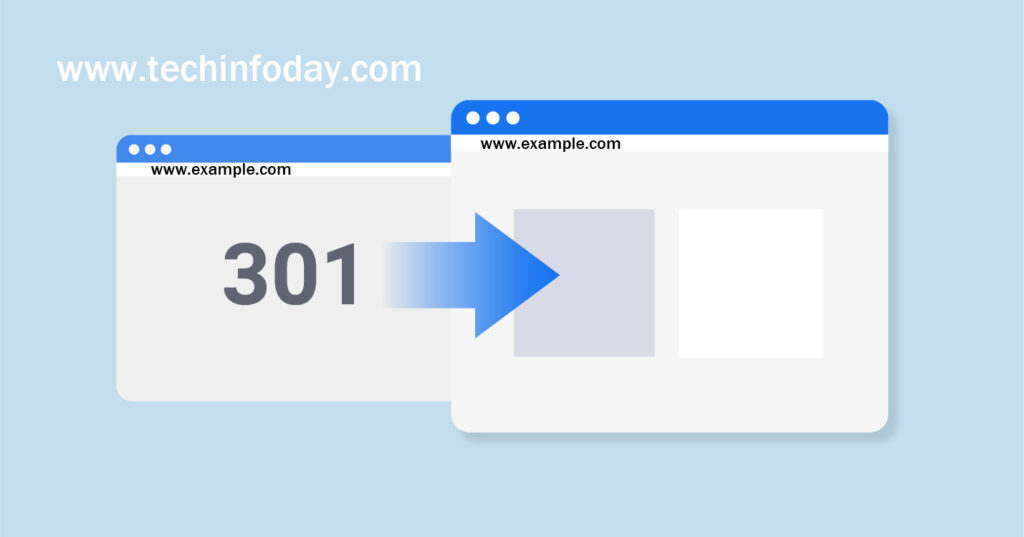Table of Contents
Introduction
301 redirects play an important role in the health of your website. Read this article to learn the basics of using 301 and learn the tips and tricks from Hallam’s SEO experts team.
What Is A 301 Redirects?
301 redirect is a way to send site visitors to an active URL when the one formerly wished has be removed. A redirect should point to relevant or alike live page that is no longer wanted. This ensures the best user experience for visitor and means that every backlink value is aligned correctly and not lost on the previous page.
For example, if you check your URLs and find a URL like https://www.example.com/old1234.html, you probably want to clean it up so a 301 redirect can send visitors from that page to a cleaner page: https: / /www.example.com/new.
What Does The Forwarding “301” Mean?
301 redirects can seem as “301” or “301 always moved”. It is a Hypertext Transfer Protocol (HTTP) response status code that indicates the response from the server hosting the page to the browsers that requested the URL. 301 status codes are not inherently bad. They indicate that the requested page has redirected to another page. This is the one provided by the browser.
A 301 response can mean keeping your site architecture tidy and preventing visitors from landing on irrelevant, old, or damaged pages.
When your website server “serves” a web page to a visitor (be it a human or a search engine) on your website, it also includes a status code in the header. This information is “provided” before the actual page content and tells your browser what the page contains, it an image, HTML, PDF, video, etc. used to inform visitors or the search engine of the “status” of the page concerned.
The status code “301” is one of many HTTP responses that tell us and the search engines what is happening to this URL. The HTTP response status code “301” means that this URL has permanently moved. This means that any link to the old URL should redirected to the new URL provided.
When Must You Use 301 Redirects
301 redirects should used when a page no longer relevant, useful, or removed. They’re also very valuable for rebuilding websites with URLs sorted on the newest and cleanest pages. It is very imperative to redirect old URLs that will not stay the same when you rebuild your website.
Use Cases:
Move to a new URL (our previous website was Hallam.biz, now redirected to Hallaminternet.com)
Clean up lively URLs and redirect them to shorter, search engine-friendly types
Prevention of duplicate content problems; For example, if you have written multiple blogs on the same topic and want to bloc them into one super blog post
SEO Benefit Of 301 Redirects
301 redirects are very important for search engine optimization and can mean the difference between successful and unsuccessful website creation. There are several ways they can be helpful:
Link Equity:
301 is the preferred choice for 3xx redirects for SEO, as it has shown that around 90% of the link equity can transferred from the redirected page. This is less likely with temporary 302 redirects. As a result, the search engines may not pass the link’s value that they should forward to the new URL.
Remove Old Urls From A Search Engine’s Index
If a search engine spider happenstances a 301 redirect while crawling your website, it will need to remove the old URL from its index and replace it with the new one. This means that the new page should finally return the previous page in the search engine’s index. Meanwhile, the old URL will redirect human visitors to the unique URL when someone tries to access it.
If you don’t use a 301 redirect when removing a page from your website, search engines will display a 404 Not Found error response code, which could eventually cause the page to completely removed from the search engine’s index.
Also Read: Difference Between Google Panda And Google Penguin
How To Configure 301 Redirect

Now that we’ve covered 301 redirects, what they mean, and when to use them, let’s go over the most common implementation for your website pages.
To explain the text that should be in your .htaccess file, let’s first use a very simple example, e.g. B. Rename a page on your website.
301 Redirect Tips To Save Time
Implementing redirects is critical, but it can be time-consuming and difficult to correct the first time. Here are a few tips to benefit you save time and type the development a little easier.
If you can keep your URLs on a new site, do this
This is not always possible. However, if the old site pages have a place on the new site, keep the URLs. If the URLs are out of order or do not accurately describe the page’s content, a change may be inevitable. Leaving URLs unchanged saves time on assigning redirects and reduces the risk of lost traffic when new pages replace old ones.
Download Your Old Urls From As Many Bases As Likely Before The Website Connects
Don’t fall into the trick of last-minute panic. Get all your old URLs into a spreadsheet long before the new website goes live. This gives you time to map the old to the new and search various old URL sources less obvious broken links.
Filter Your Urls And Put Them In The .Htaccess Or Plugin In Order Of Their Length
The order of the URLs in .htaccess controls which redirects achieved first. Use a length formula to count the characters’ length in the URL, categorize it, and filter from longest to shortest. Adding shorter URLs to the end of each category will prevent them from firing before they have a chance to redirect longer URLs.
Use formulas to complete simple sections of the redirect mapping
One use case could be that a category base has added to a live URL, so the category should only be added for all URLs above.

